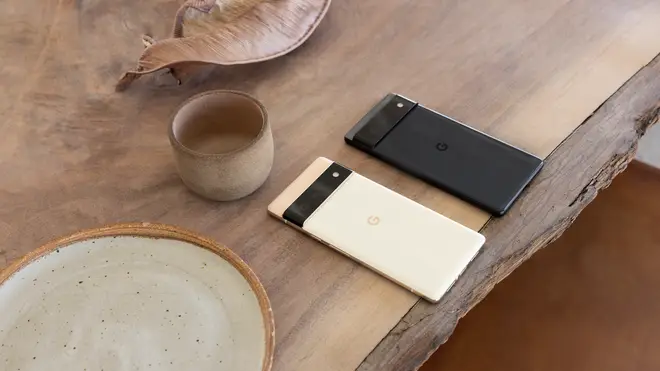
Ian Payne 4am - 7am
25 November 2021, 13:34

Can Google’s latest handset take on Apple and Samsung?
The Google Pixel has been trying for a long time to carve itself a space alongside the iPhone and Samsung’s Galaxy line-up at the top of the smartphone world, and 2021 see its best attempt so far.
The Pixel 6 Pro is the flagship device of Google’s 2021 phone range, with a new overall design, updated camera system and the inclusion of Google’s own Tensor chip to boost performance and power.
On paper, it looks and sounds like an impressive proposition, but how does the Pixel 6 Pro shape up?
– Design
Taking a big step forward compared to the previous Pixel generations, the Pixel 6 Pro is a sleek, all-glass device.
The Corning Gorilla Glass Victus used on the display makes the screen twice as scratch resistant as previous Pixel phones, Google says, and it is slightly curved at the edges to create the impression it is made of a single block of glass.
The only downside to this sleek design is the camera housing, which on the back of the phone takes the shape of a large bar across the back of the device.

The other major change is on the inside of the phone, with Google introducing its own chip – the Google Tensor – to the device for the first time.
It’s been custom-made for the Pixel, Google says, which should mean the phone itself is faster and smarter.
In this instance, Google isn’t exaggerating, the Pixel 6 Pro is sharp and the Google services in the background are regularly on the money when it comes to recommendations or suggestions based on how you use the device, or for functions such as translation or image processing.
– Experience
The user interface on the Pixel, provided by the latest version of Android – Android 12 – is a nice place to be when you wake the phone.
One new feature enables the user to blend the colour of text and Google app icons with the colours of the home screen image, which has a smart, uniform effect and makes the home screen feel less frantic and a barrage of colours or information.
The downside is some of the new widgets, including the different clock options, which are a bit clunky and awkward-looking, and despite following this new colour-coding scheme, feel a bit blotchy on the screen.
Another area that doesn’t quite hit the mark is the in-screen fingerprint sensor. Despite the Tensor chip being in place to speed up things generally, the fingerprint scanner feels very slow compared to other biometric devices in other phones.
Back on the positive side of things, battery life is excellent and up there with any of the Pixel’s main rivals.
Google has added Adaptive Battery, which means the device shuts down apps and features when they’re not being used in order to save battery life – and in general it works a treat – allowing the phone to comfortably last the day.
It also charges quickly when you need it to, the compatible faster charger providing up to 50% charge in around 30 minutes.
But the star once again is the Pixel’s camera system. It may be housed in that unsightly bar on the back of the phone, but it goes a long way to repaying that debt by once again offering stunning smartphone photography.
Lowlight photos in particular continue to be a key selling point of the device, as does colour reproduction, making for bright, vivid photos very often.
But arguably the best new feature comes in the editing sense through the new Magic Eraser tool.
It allows users to scrub out unwanted photo bombers or other elements from photos, using machine learning to fill in the gaps where subjects have been removed.
Crucially, it is very impressive for the most part and makes what can be a difficult editing tool easily accessible for any smartphone photographer.
– Verdict
The Pixel 6 Pro is a very good reimagining of Google’s flagship device. It feels like the best version of “the Google Phone” so far, with all those key Google service front and centre and more responsive than ever thanks to the Tensor chip.
Price-wise too, the 6 Pro has a clear advantage over its Apple and Samsung rivals because by starting at £849 it is able to undercut their key devices by a reasonable amount.

However, the biggest issue with the Pixel still remains: beyond the camera system, it still isn’t able to match its rivals for key features or functionality.
That bulky camera bar doesn’t help matters either.